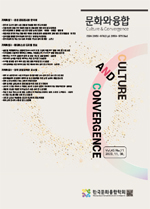본 연구는 유네스코 인류무형유산 모범사례로 등재된 스페인 푸솔학교박물관 사례를 통해 지역사회가박물관 운영에 참여하는 양상과 이를 통한 해당 지역 문화유산의 전승과정을 고찰해보고자 한 것이다. 본 연구의 대상인 스페인 푸솔학교박물관은 지방 소도시 엘체의 문화유산을 보존하고 전승하는 것을주요한 박물관 정체성으로 내세우고 있으며 학교박물관이라는 독특한 공간을 통해 세대 간 소통을 꾀하고 문화유산전승 프로그램을 만들어 실천하고 있는 곳이다. 본 연구는 푸솔학교박물관 사례를 통해지역민들의 참여양상을 전시내용, 유물해석, 그리고 이를 기반으로 하는 무형유산전승의 관점으로 살펴보고자 했다. 해당 박물관은 지역의 역사와 문화유산을 중심으로 전시를 재현하고 있으며 노인세대 구술인터뷰를 기반으로 유물에 대한 해석을 시도한다. 또한 문화유산 전승 방안으로 다양한 세대의 프로그램 참여를 유도하고 있으며 그들의 참여를 기반으로 지역 공동체와 박물관 간의 협업과 상생의 구조를 구축해가고 있다는 점에서 의의가 있다.
The purpose of this study is to analyze the way in which the local community participates and affects the operation of the Pusol School-Museum in Spain, registered since 2009 in the UNESCO ‘Good Safeguarding Practices’ list, and how it leads to the transmission of the regional cultural heritage. The main identity of the subject of this study, the Pusol School-Museum, is the assertion, preservation and transmission of local cultural heritage in the municipality of Elche, a small rural region in Spain. The contents of the museum are developed as educational programs that local students can enjoy. In this way, the Pusol School-Museum in meanful for the local community, introducing the participation of several generations through numerous cultural heritage transmission programs, and building a structure of collaboration and coexistence between the municipal inhabitants and the museum.
1. 서론
2. 푸솔학교박물관의 설립과 운영
3. 푸솔학교박물관의 생활사 전시재현과 지역공동체의 참여
4. 결론
(0)
(0)
